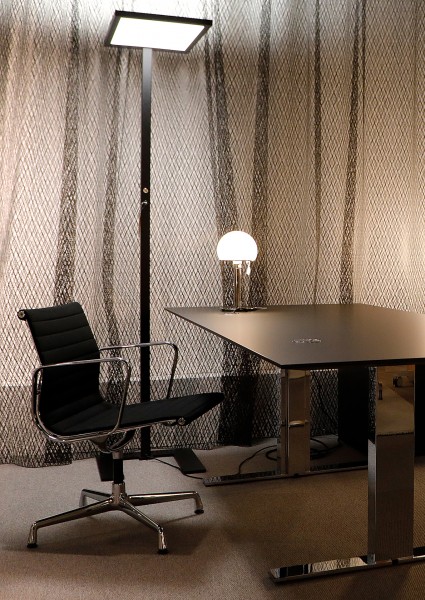Home office
Home office has many aspects, social, digital, psychological, legal, economic, ecological and health (ergonomic). Many institutes and health insurance companies have conducted or commissioned studies, which, depending on the tendency, lead to different results. What is certain is that Home Office is industry-specific and is gladly accepted or even demanded, especially by the younger generation, at least on a daily basis.
Lone fighter or party popper?
Furthermore, home office is a question of personality traits that are difficult or impossible to influence: Lone warriors and introverted people feel well taken care of at home, while extroverted people need contact with colleagues and chatting in the office to feel comfortable and be productive. One thought connects the working environment in the office with that in the home office, the desire for a pleasant, ergonomic working environment. The basis for this is the DIN EN ISO 26800 standard, which stipulates that the work material should adapt to the person and not vice versa.
Ergonomics as a science
Many factors influence the well-being of people working in the office or home office. Ergonomics as a science now extends to many areas of application. Regardless of its context, the ergonomic principles remain the same, the optimal consideration of human characteristics and needs. Ergonomics deals with physical, cognitive, social and organizational aspects in a holistic context.
Ergonomics for people
The ergonomic principles also apply to the design of facilities and environments. Objects should not only adapt to the body, but also take into account people's values, abilities and limits. Ergonomics is a criterion of good industrial design: The design of office furniture includes the adaptation to the respective body dimensions. In addition, products must be safe and low-risk, do their job effectively and reliably over a long service life, and maintain and promote health, performance, satisfaction and well-being of people.
The importance of ergonomics in the workplace
Ergonomics is important where people come into contact with machines such as computers and other objects such as office chairs while working. The goals of ergonomic work design are efficient and error-free work and the protection of health, even during long-term work. Ergonomics is preventive occupational safety and health protection and combines economy and humanity.
Physical ergonomics
The "physical ergonomics" also deals with the design of a workplace in the office or home office. In addition to work processes, the aim is to maintain health by avoiding postural deformities. In addition to the physical stress caused by rigid sitting or standing, soft environmental factors such as room climate and temperature, color design, accessories, environmental noise, vibrations and mental state are also added. Anthropometry is the science of human proportions. The findings of anthropometry are needed, among other things, to furnish workplaces and produce furniture.
Anthropometry or the average person
The results of anthropometry lead to norms that do not always fit people, average tall people are luckier than others who deviate from the norm by height and stature. The "small difference" can also be found in the gender. While the average European is 1.80 meters tall, the average European woman is 1.67 meters tall. Increasing migration in Europe is also causing the population to vary in size, and standardization could result in an additional health burden for those affected. Translated with www.DeepL.com/Translator (free version)







